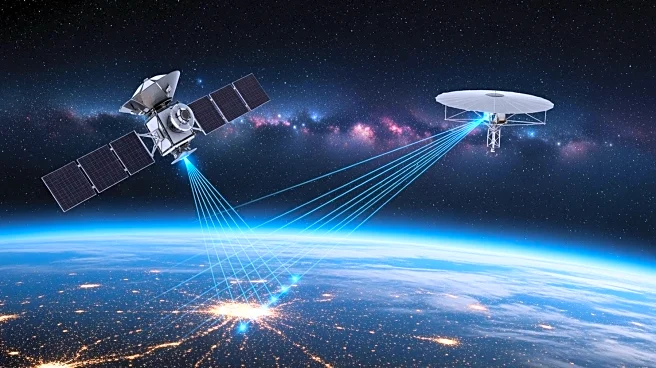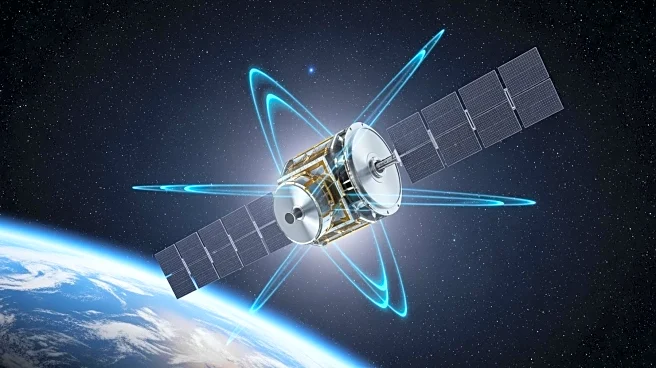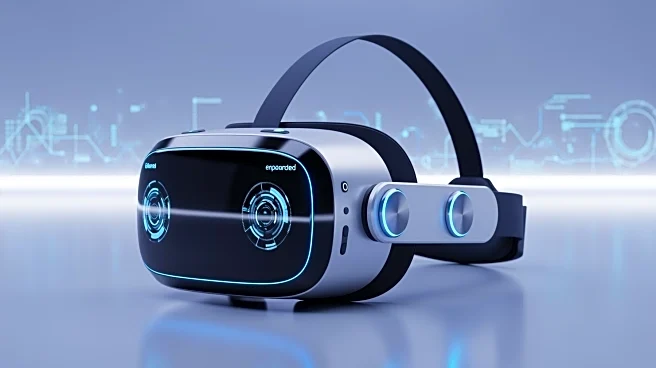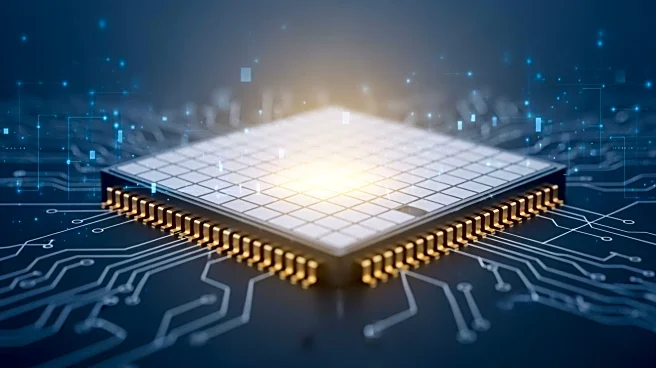What's Happening?
SoftBank, in collaboration with the National Institute of Information and Communications Technology (NICT) of Japan, Kiyohara Optics, and ArkEdge Space, is developing optical wireless communications for low
Earth orbit (LEO) satellites and high altitude platform stations (HAPS). The initiative aims to launch a LEO satellite in 2026 to test optical wireless communications between space and the ground. The communication device under development is designed to be compact, lightweight, and energy-efficient, enabling high-speed, bidirectional communication at 10 Gbit/s. SoftBank is enhancing the device to operate in extreme environments, such as radiation exposure in space and temperatures below -90°C in the stratosphere. The demonstration satellite will incorporate advanced attitude control technologies necessary for optical wireless communications.
Why It's Important?
The development of optical wireless communications represents a significant advancement in next-generation high-speed communication technology, particularly for non-terrestrial networks like satellite communications and HAPS. Unlike traditional radio waves, optical wireless communications use light, eliminating the need for frequency allocation and wireless licenses, while offering high-speed connectivity. This technology could revolutionize communication infrastructure by providing stable, high-speed connections over vast distances, potentially impacting industries reliant on satellite communications. The successful implementation of this technology could enhance global connectivity, improve data transmission rates, and support the growing demand for high-speed internet access.
What's Next?
SoftBank plans to mount optical wireless communication devices on HAPS in 2027 to verify bidirectional optical wireless communications between space and the stratosphere. This ambitious project involves establishing communication over distances up to approximately 2,000 km, a technically demanding task. Additionally, SoftBank is advancing its HAPS ambitions by developing next-generation batteries and solar cells to support long-duration HAPS flights, with a stratospheric demonstration planned for fiscal year 2028. These developments are part of a broader initiative by Japan's New Energy and Industrial Technology Development Organization (NEDO) to enhance maritime location technology using high-altitude unmanned aircraft.
Beyond the Headlines
The optical wireless communication technology being developed by SoftBank and its partners could have far-reaching implications beyond immediate communication improvements. It may lead to advancements in environmental monitoring, disaster response, and global internet access, particularly in remote or underserved regions. The technology's reliance on light rather than radio waves could also reduce regulatory hurdles associated with frequency allocation, potentially accelerating deployment and adoption. Furthermore, the collaboration with NEDO on battery and solar cell development highlights a commitment to sustainable energy solutions, which could influence future aerospace and telecommunications projects.












